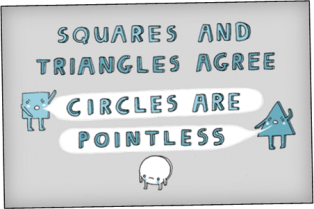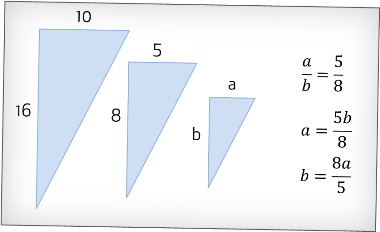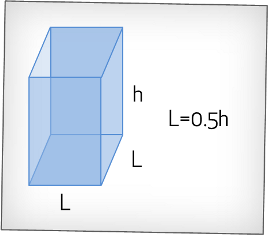Hi!I’ve seen quite a few questions on Related Rates recently in the forums so I thought I’d write up a guide on how to get started with Related Rates with some tips on how to approach more challenging questions. Personally, I think the textbook didn’t explain Related Rates too well but they are very important as these types of questions come up quite often in VCAA exams. Practice makes perfect with this technique (like a lot of things), so don’t worry if it takes a while at first - hopefully this guide will speed things up.
What is Related Rates all about?The whole idea of Related Rates in VCE Methods is to express one rate as the product of two or more other rates, essentially creating a connection between them. I’ll illustrate this with a really simple example:
Let’s say there are a few birthday parties for kids happening around Melbourne. Each kid has 20 birthday balloons, and each party has 15 kids attending. So we have two rates:
 \ \ \text{and} \ \ 15 \ \left(\frac{\text{kids}}{\text{party}}\right))
So how would we find out how many balloons there are per party? We’d multiply the two rates.
 \ \times \ 15 \ \left(\frac{\text{kids}}{\text{party}}\right) = 300 \ \left(\frac{\text{balloons}}{\text{party}}\right))
By multiplying the balloons/kid by kids/party, we have eliminated the kids (that sounds awkward) and we are left with the balloons/party – our desired rate.
 I thought this might be relevant, do not try this at home!
I thought this might be relevant, do not try this at home!Another simple example is the conversion of units. We know there are 10mm in a cm and 100cm in a metre, so we can express mm/metre as the product of the first two in order to cancel out the cm:
\times100 \ \left(\frac{\text{cm}}{\text{metre}}\right)=1000 \ \left(\frac{\text{mm}}{\text{metre}}\right))
Here’s the thing which makes it more complicated in Methods. The rates are not always going to be constant. The rates may depend on height, length, time and other different variables.
How do I use the Chain Rule for these questions?The use of the chain rule is essential when solving these questions. From differential calculus, you should know the chain rule as

where we eliminate the du to leave dy/dx.
For Related Rates, we need to be able to apply the chain rule with different variables so it is important you are fast at setting the chain rule equation up. How do you set it up? Here is a step by step approach:
Let’s take the practical example from the previous section with balloons. Let’s say we want to find out the rate ‘balloons/party’ and we are given the rate ‘kids/party’, how do we know what the unknown/missing rate is?
1: Set up the chain rule using the rate you are trying to find (balloons/party) but break it up into two separate rates:
 2:
2: Fill in the rate you are given (kids/party):
 3:
3: Complete the chain rule by introducing a ‘kids’ on the denominator:

So our missing/unknown rate is ‘balloons/kids’.
We can apply this exact same process to other rates. Let’s say we want to find ‘dr/dt’ and we are given ‘dr/dh’
1: Set up the chain rule using the rate you are trying to find (dr/dt) but break it up into two separate rates:
 2:
2: Fill in the rate you are given (dr/dh):
 3:
3: Complete the chain rule equation by introducing a ‘dh’ onto the numerator:

So our missing/unknown rate is ‘dh/dt’, this would be the rate we would want to find in a Related Rates question.
Try these out: Create a chain rule equation to link the rate we want to ‘Use’ (given rate) and the rate we are trying to ‘Find’.
Example:  Questions:Answers:Useful tools and tips for solving Related Rates questions:
Questions:Answers:Useful tools and tips for solving Related Rates questions:Now that we have established how to set up the chain rule, here are some useful tools for solving these questions:
Geometry Formulas:(Note: most of these are available on the formula sheet!)Area of a Circle:

Volume of a Sphere:

Volume of a Cone:

Volume of a Cylinder:

Volume of a Rectangular Prism:

Volume of a Square Based Pyramid:

 Rate Flipping:
Rate Flipping:
This means we can take the reciprocal (flip) the rate in order to fit it into a chain rule question. So if we can find V in terms of h, differentiate it to get dV/dh, we can then flip it to make dh/dV if our chain rule requires it.
Drawing diagrams:If you are having issues visualizing certain problems, it can be very useful to draw a diagram so you have a better idea of what you are working with. Do a quick sketch of the situation and label all important features of your diagram.
Similar Triangles:This is assumed knowledge for Methods so you can be required to use this technique (comes up a lot in cone questions!). If two triangles are similar, the corresponding sides of the triangles are proportional to each other. We can then create an equation to link the two triangles. Make sure you have drawn an appropriate diagram before you set up the fractions:
 How to approach any Related Rates question (with examples!)
How to approach any Related Rates question (with examples!)Here is a step by step approach to any related rates question – I’ll then run through different examples.
1. Identify and write down all the key information given. Draw a diagram and define variables if need be. For most Related Rates questions you will be given one rate and told to find another rate with a given condition.
2. Set up your chain rule equation. Place your resulting rate (the rate you are trying to find) on one side of the equation and the given rate on the other side. Figure out what rate you need to multiply the given rate by in order to complete the chain rule equation.
3. Using given information in the question, work out the unknown rate. This will most likely require you to use a geometry formula. This can often be the hardest part of a question.
4. Bring all the information back into the chain rule equation with appropriate substitution. Find your resulting desired rate.
5. Substitute in any given conditions and present your answer. Don’t forget units!
Example 1:The radius of a circular puddle of water is increasing at a rate of 4 cm/s. Find the exact rate at which the area is increasing at the instant the radius is 10 cm.
Worked Solution:
Spoiler
1: Identify and write down all the key information:

Let r=radius of the circle, A=area of the circle and t=time. We have been given dr/dt
(the rate in which the radius is changing with respect to time) and the question wants us to find dA/dt
(the rate in which the area is changing with respect to time) when r=10.
2: Set up your chain rule equation:

We want our resulting rate to be dA/dt so we can place that on one side of the equation. We are given dr/dt so we should put this on the other side of the equation. From previous sections you should be able to complete the chain rule equation and instantly recognize that if we multiply dr/dt by dA/dr we will get our desired dA/dt.
3: Using given information in the question, work out the unknown rate:
We have just introduced dA/dr into the question, but how do we find out what it is? We need to find out an equation for A in terms of r which we can differentiate. The key information is in the question. The question says “radius of a circular puddle of water”
This means that:
 4:
4: Bring all the information back into the chain rule equation:
Now that we have found what dA/dr is, we can substitute that into the equation we made in Step 3.

This means that our rate of change of the area is dependent on the radius of the circle. When the radius of the circle is smaller, the dA/dt is smaller and when the radius of the circle is larger, the dA/dt is larger.
5: Substitute in any given conditions:
We have found dA/dt but that isn’t our final answer. The question asked for dA/dt when r=10, so we must substitute r=10 into dA/dt.
=80\pi)
Hence when the radius of the puddle is 10cm, the rate of change of the area is
)
.
The surface area of a cube is decreasing at a constant rate of 9 cm2/s. Find the rate at which the sides of the cube are decreasing when the sides are 1.5 cm long.
Worked Solution:
Spoiler
1: Identify and write down all the key information:

(note the negative because the area is decreasing!)
Let A=surface area of the cube, let S=the side length of the cube and let t=time. We are given dA/dt and we want to find dS/dt (the rate in which the side length is changing with respect to time) when S=1.5.
2: Set up your chain rule equation:

We want our resulting rate to be dS/dr so we can place that on one side of the equation (LHS in this case). We are given dA/dt so we need to multiply this by dS/dA to complete the chain rule equation.
3: Using given information in the question, work out the unknown rate:
We have just introduced dS/dA into the question, but how do we find out what it is? We can first find out what dA/dS is then flip it to get dS/dA. So we need to find out an equation for A in terms of S. The key information is in the question. The question says “the surface area of the cube is decreasing” So it follows that:
) 4:
4: Bring all the information back into the chain rule equation:
Now that we have found what dS/dA is, we can substitute it into the chain rule equation. So
 5:
5: Substitute in any given conditions:
The question asks for dS/dt when S=1.5, so sub it in:
}=-\frac{1}{2})
Hence when the side length of the cube is 1.5cm, the side length is decreasing at a rate of
)
A rectangular block of ice is melting at a rate of 2 cm3/s. The block has a square base and its base length half the height of the block. Find the rate at which the base length is changing when it is 8 cm.
Working Solution:
Spoiler
1: Identify and write down all the key information given.

Here is a diagram you might draw up for the example above:
 2:
2: Set up your chain rule equation:
 3:
3: Our unknown rate is

How can we find it?
We can find dV/dL first then flip the fraction to make things easier. So first we have to find V in terms of L. Because it has a square base, the volume can be expressed as

.
But we cannot differentiate this straight away because there are two variables that change. We want to find dV/dL so we need to get rid of the h. How do we do this? Use the available information to find an equation for h in terms of L - remove the h by introducing an L.
From the question, we know that the base length if half the height of the block. So

We can now sub ‘h’ into the equation so:
 = 2L^3)
Now we can differentiate this in terms of L and then flip it to get dL/dV.
) 4:
4: Bring all the information back into the chain rule equation:
 5:
5: Substitute in given conditions:
We want to find dL/dt when L=8, so lets substitute it in:
^2}=-\frac{1}{192})
Hence when the length of the square side of the block is 8cm, the rate in which the length is changing is
)
Below I’ve linked a few Related Rates questions from the Methods 3/4 Question Thread and other threads which might be useful to look at:
Cone Question (using Similar Triangles) – Zealous Cone Question - StevensmayAeroplane Flying and Angles of Elevation – Alwin Melting Block + Cone of Sand – Zealous Area underneath a Ladder – Phy124 Cone of Grain – b^3Streetlights and Shadows – ZealousFalling Ladder – Stevensmay Conic Vat pouring into a Swimming Pool – ZealousThere is also a quick vTextbook video on Related Rates where Asher runs through a cylindrical bottle question:
Related Rates – vtextbook.comAnother good video is a video by KhanAcademy (Salman Khan is awesome!) where he runs through a cone question:
Related Rates of Water Pouring into Cone – YouTubeExtra advice for Worded Problems (b^3 and Alwin have some good tips!):
Re: Advice for worded problems?_______________________________________
So there it is! A guide on how to approach related rates questions. Hopefully this helps you guys out and gives you a better idea of what Related Rates is all about. So what now? Start doing some questions. Your textbook questions + questions available from past VCAA exams will be good practice to apply the techniques explained in this guide. You could even take the questions from the additional examples listed just above if you want (some of them are quite challenging!).
Special thanks to b^3 who helped me make sure everything in this guide is correct and makes sense.
All the best for Methods and the rest of your subjects!
Zealous

